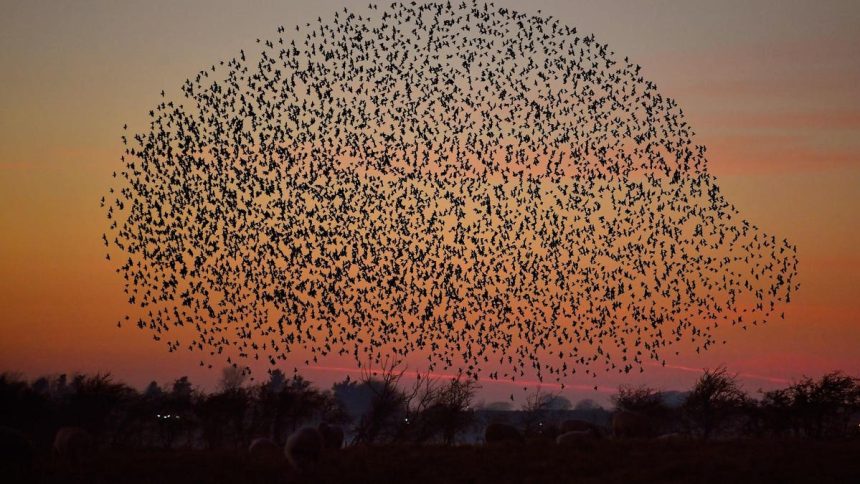“May you live in interesting times.”
Whether you regard that as a curse or a blessing, it’s hard to imagine any time in human history more interesting than this one, that is, more fraught with uncertainty, more explosive in chaos and opportunity, or more pivotal in consequences. We live at the intersection of two existential crises brought about by a rational stage of consciousness that we, humanity, have been growing up through. This natural and important stage of development has given rise to industrial and technological revolutions, democracies and the modern age. It has also brought climate change and AI to critical points of no return and a curious confluence, as both land on today’s leaders simultaneously.
On the whole leaders have been as speedy to embrace AI as they have been slow to face climate change, fearing they’ll compromise their competitive advantage by missing out on the first or accepting the second. No sooner had Chat GPT launched, garnering 100 million users within 3 months than experts were warning that we should put a pause on AI development until we better understand and regulate it. As Integral Life’s Corey DeVos observed, “All of a sudden people are concerned about the future of our species in a way that 50 years of talking about climate change never got to.” But what if the intersection of these forces is no accident, but rather, exactly what we needed? For together, they elevate the urgency to elevate our consciousness. If we can agree with Einstein that problems cannot be solved at the same level of consciousness we were at when we created them, these mighty pressures create an evolutionary necessity to grow beyond the rational “head” stage of development to a more integrated, embodied form of leadership that can function from connected wisdom, not merely intellect. Intellect solves for what is logically in one’s own interests and that of one’s immediate circle of concern. Connected wisdom solves for what is in service of the whole picture and how one can help bring that about. From such wisdom, we may even find useful ways these mega pressures intersect, where nature can guide us in deploying AI and AI can help us address climate change. Mammoth as this task may be, there are practice-able inner steps and practical outer steps leaders can take to rise to this challenge and possibility. And no time to lose.
It’s anybody’s guess whether climate change or AI is likely to be the greater disruptor in a given sector, timeframe or geography. Which is more likely to upend life as you know it? The case for both is compelling.
The latest IPCC report states that at current levels of carbon emissions, without abatement, we will exhaust the budget to stay within 1.5°C within 7 years. Many ecological changes are happening even faster than models predicted. Ocean water temperatures, for example, a harbinger of hurricanes, are higher than expected and warming beyond any previous records, according to Dr Robert Rhode, lead scientist of the Berkeley Earth Institute. Canada is experiencing a record-breaking fire season, with some provinces seeing 50 times as much land burned as normal, giving the Midwest and northeastern United States a taste of the hazardous smoke the West has been living with for years. As the IPCC reports, the choices and actions implemented in this decade will have impacts now and for thousands of years.
At the same time, alarm bells are sounding around AI. The exponential development of large language models and their adaptive learning capability has evolved to the point beyond what humans can predict or control. The effort to pause AI development for six months didn’t materialize, but rather highlighted the race among companies and countries for AI supremacy. Yuval Noah Harari sees AI as a hack of civilization itself. Integral Life calls it an “ontological shock”, upending the deep structure of the world. The Center for Humane Technology points out that we’re still reeling from the unexpected, emergent consequences of social media (e.g., threats to mental health, democracy, fake news), which are but a prelude to what AI will unleash. Mo Gawdat, former AI Manager at Google, says the AI revolution has already begun and the next 10 years will be particularly fraught, because that will be the time when human leaders are still able to make decisions—for better and worse—around how AI is used. After that, he predicts, the machines will be in charge.
Just for reference, 10 years ago, Twitter went public, Apple released I-phone 5 and Pharrell Williams took “Happy” to the top of the music charts. Ten years is the blink of an eye.
The point is not to be alarmist, but to evidence the evolutionary pressure upon us now. One can imagine the first amphibians to climb out of the pond were not doing so because the pond was a perfectly comfortable place to be. Something provoked them, as we are being provoked to evolve or die. So how might we answer this pressure and evolve our consciousness as leaders? How might we be the bridge of wisdom that deploys AI in service of life?
Like inhale and exhale, we best approach this work as a weave of inner practices and outer actions to shift consciousness, engage from a more connected state, and adapt through feedback. Here are three practices that move from inner work to outer steps that you can move back and forth between, weaving together connected wisdom, nature’s intelligence and artificial intelligence.
Meditation and contemplative practices centering in breath and body: From my experience in Zen meditation, what leads to breakthrough experiences of connectedness is not staying up in the head (which the term “mindfulness” can suggest), but developing deep, slow breathing regulated from the hara (lower abdomen) and fully opening the senses. Try breathing deeply and slowly, as if each breath were arising from and returning to the center of the earth. Let your vision soften to 180-degrees and likewise expand your hearing and all senses into the abundant fields of energy they dance with. A visceral experience of one-with-ness eventually arises on its own. This expansiveness cultivates a wisdom that can see through the ramblings of ordinary thought and increasingly guide it.
Immersions in nature: Find places in nature that you love and immerse yourself in them often. Don’t arrive as a dominator, but as a learner, full of curiosity to rediscover what was once known in our bones: how nature works and how we can work as a force of nature. It is a wisdom retained in Indigenous cultures but has been largely mortgaged to modernity in us Western urbanites. A practice I learned in one of our programs at the Institute for Zen Leadership (IZL) is to start with a query—an issue one is chewing on—and then go into nature, sense some part of it that could hold insight relative to the question and ask permission to listen. It could be a tree, flower, water, rock, ant, bird, whatever, but ask permission first. Once granted, listen with every pore of your body. Afterwards, capture any insights that can guide you.
Engaging AI with wisdom: If you’re one of the hoards of people already using ChatGPT, you know that it acts like a super search engine to give sophisticated, adaptive answers to whatever it’s asked. While technology leaders have many ways they can engage AI with wisdom, a useful practice that any of us ChatGPT users can do is to uplevel our questions. For example, if we’re querying about a growth strategy for our business, we can ask how can our business also be regenerative and care for people, planet and the future? We can ask how might we optimize profit and purpose? For whatever matter we’re considering, we might imagine ourselves as the whole picture and from a holistic perspective, ask what serves best? The answers we get back won’t be complete solutions; as always executing on good advice is harder than coming up with it. But the answers will often point us in useful directions or help us see possibilities we wouldn’t have come up with on our own.
I recently experimented with this last practice as regards a growth strategy for IZL, which is the organization I lead. In my opening query, I briefly described our mission and asked how we might grow. Within 10 seconds, back came an 8-point strategy right out of the best MBA courses. I then asked how this strategy would change if we wanted regenerative growth, with care for people, planet and the future. This time, the 8-point response was different, including focus on environmental stewardship, fostering a culture of well-being and inclusivity, and engaging in continuous learning and adaptation. I then asked how could AI helps us do these things? And back came concrete suggestions, for example data analysis to look for energy, waste, and resource usage within our organization or content curation and adaptive learning platforms for our programs.
Several things stood out to me in this dialogue. First the incredible speed and scope of it. There were good ideas in ChatGPT’s responses, delivered on the spot, and many I wouldn’t have thought of on my own. This was much faster than earning an MBA, reading 10 books or hiring a strategy consultant. Second, there was something distinctly formulaic about the responses, yet some of them resonated in me as, “Yes, that’s something we need to do.” So, as AI interacts with human consciousness, it will present a field of possibilities but what we pick up will come from our experience, our consciousness, and whatever sense of connectedness we bring to it. Hence the need to keep weaving together the inner work and outer work. Third, the kind of intelligence I sensed in ChatGPT was not like nature, but rather about nature. It didn’t speak from depth, but rather from what Ken Wilber has termed a “flat land” where everything is just words. Some of them are good and useful words, to be sure, but we need to remain steeped in nature’s intelligence if we are to apply AI in service of life. AI doesn’t understand “regeneration;” it simply knows that word is associated with other words like “environmental stewardship” and “sustainability.” Nature understands regeneration. Hence the need to keep weaving nature immersions into our excursions into AI.
What interesting times we have chosen to live and lead in. A pivotal decade lies ahead. Let us use the pressure to leap to a more connected consciousness that can resolve and optimize nature’s intelligence and AI in service of a thriving world. If some of the experts in AI or climate change are right, this is our last chance to do it.
Read the full article here










